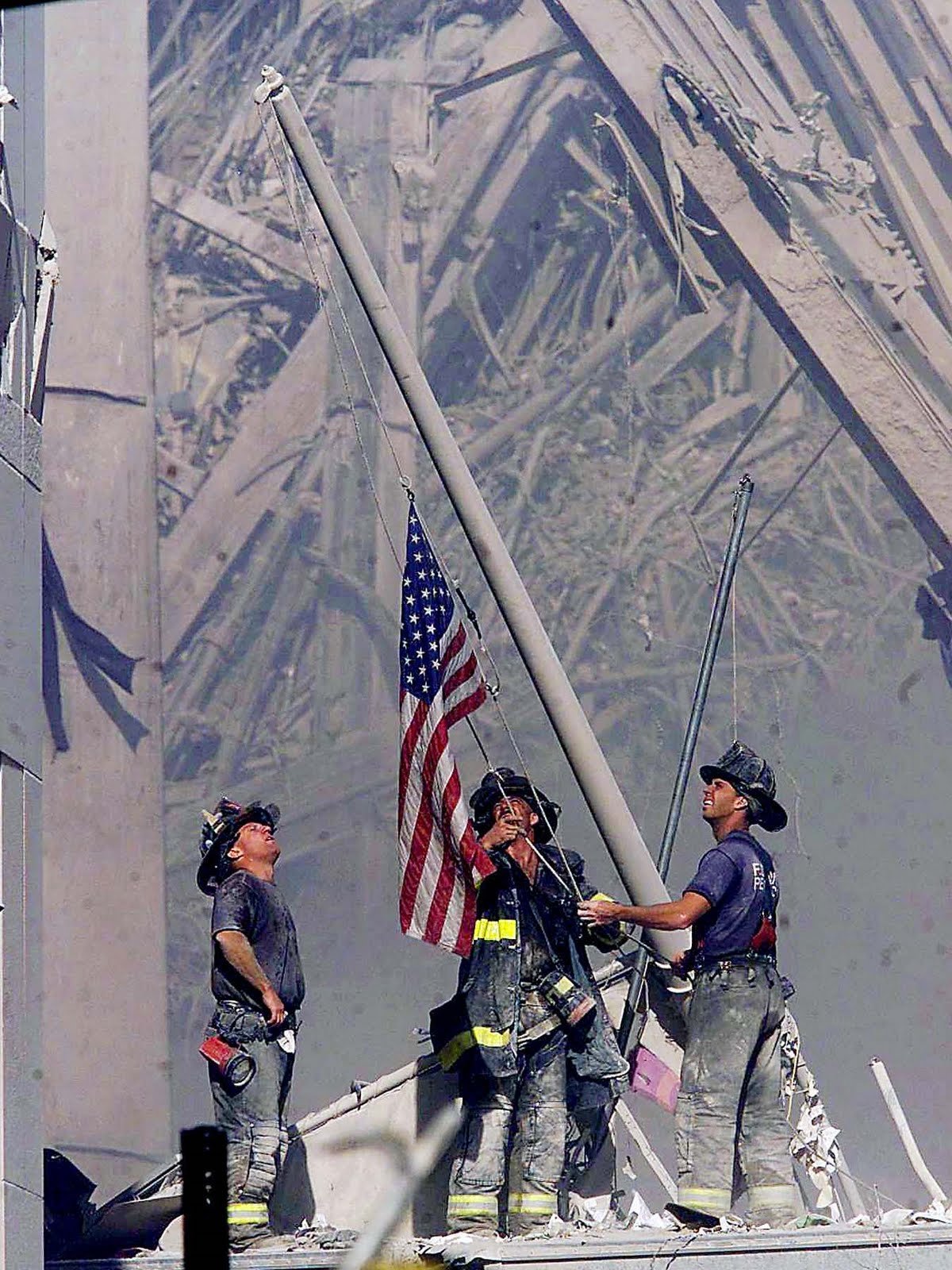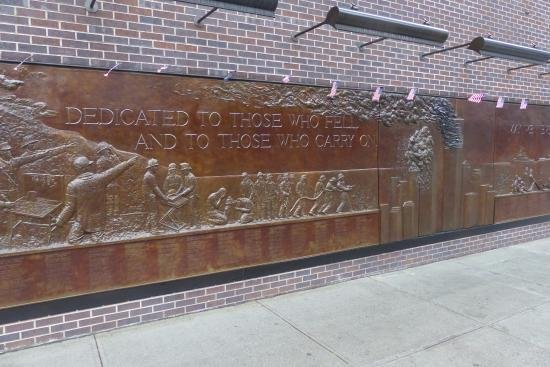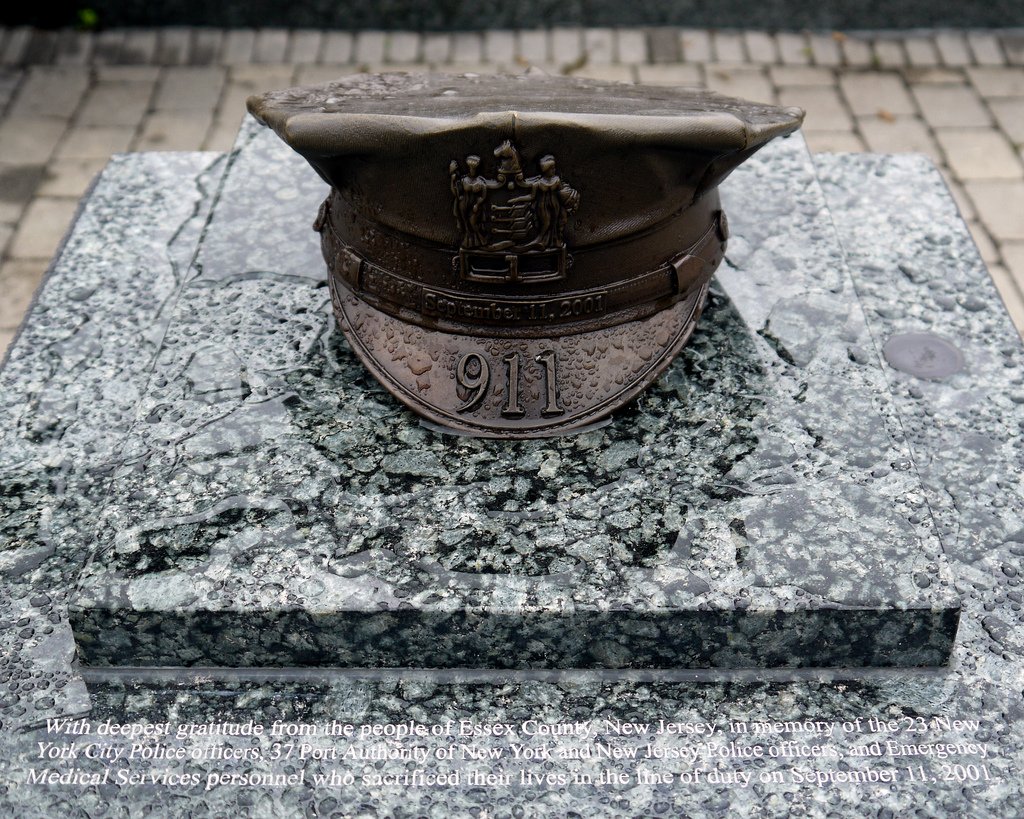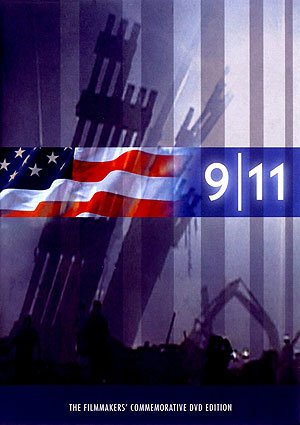A hero is a man who does what he can. (Romain Rolland)

Photographed by Thomas E. Franklin
This is the third and final part of my series on my experiences during and after September 11, 2001. If you would like to read the other pieces first, you can find them here: Part One and Part Two
...Then I saw something I will never forget as long as live. Reporters were interviewing people who were rushing into the burning buildings.
Of course these people were the first responders who answered their call to duty that day. These heroes had families. These heroes could have turned and run to their own loved ones. Instead, they turned toward the danger. They ran into the threat in order to save other peoples' loved ones... like they do every day.
I have pretty vivid memories of the early morning of September, 11, 2001... until I saw one imagine on the television that broke me. It was just too much. Everything after seeing this image was a blur. I know Bill and I continued to calm and support the students. I know that we continued to teach them how to be an intelligent viewer as reporters shared incomplete and sometimes erroneous information as quickly as it reached their earpieces. (But of course they had to. This was real time. Everyone was trying to wrap their heads around this as it unfolded.) I know the 3:00 bell eventually sounded and we all somberly made our ways home. But if you asked me to share specific details, I would be at a loss.
What image "broke" me?
As the students and I watched the television, the room was silent as a reporter interviewed a firefighter who was on his way into the building. In the background of the shot, countless other first responders filed into the twin towers. I only remember one question that the reporter asked, "You're going in there?" The firefighter didn't have time to talk, so he simply said, "It's my job". He ran into the building. A few seconds later, the building he had just rushed into collapsed. He, and all the other brave people who ran towards danger while other fled, were gone.

New York Financial District 9/11 Firefighter Memorial
"It's my job."
I'm honestly not sure if it was that exact moment or some other time in the following hours or days, but I decided that my job would be to educate my students about the heroes from this tragic day. It is ridiculously insignificant in comparison to what others did... but it's what I can do.
I teach World History In America. This usually means our content covers from 4.5 million B.C. to around 1970 A.D. But in my class, we make it to October, 2001 (that isn't a typo, the weeks after are very significant as well).
During the final nine weeks of the school year, I must educate my students about some of the most horrible and depressing topics imaginable (WWI, WWII, The Holocaust, Six other genocides, and 9/11). These lessons center around many human beings at their worst. In order to avoid my students and I leaving class depressed every day, I also highlight the heroes who stood up and exemplified human beings at their best. The first responders of 9/11 are a prime example.

Eagle Rock 9/11 Police Memorial
Every year, before I teach my 9/11 lesson, I scour the internet for the exact video of the firefighter entering the building after simply stating, "It's my job". I have never found it. But the annual search assures me that I won't forget it. It also ensures the fact that when I tell my students the story, I will be able to do it with the proper amount of passion.
As part of my lesson, I show the documentary "9/11". It begins as a story about a rookie firefighter. It continues by showing footage of the first plane crashing into a twin tower and the entire firehouse rushing to the scene of the "accident". Next, the film crew follows some of the firefighters into the building as it burns. The footage from inside the tower as chaos rains down is breathtaking. It ends with photographs of every first responder who sacrificed his or her life to try and save other peoples' loved ones that day. I can't describe it. Just watch it. 9/11

Columbia Broadcasting System
But I don't leave the students there. This is my last lesson before finals. So I make sure to show them that it's not just first responders who are heroes. On September 11, 2001, thousands of New Yorkers (and other regular people) stepped up and tried to "do what they can". One seemingly unlikely group were boat owners.
The Twin Towers were located on Manhattan Island. An island that was filled with millions of people. No one knew if the morning's events were just the beginning of a series of attacks. More devestation could come at any second... and millions of people were trapped on an island.
Airlifts were impossible. The bridges were dangerously overcrowded. The navy and coast guard could not get enough ships there fast enough. So a call went out. And hundreds of regular people answered it. They jumped in their boats and headed toward a burning island... just to try and "do what they can".
I can't do the story justice. But Tom Hanks can.

Eyepop Productions, Inc.
On that tragic day as well as the weeks and months following it, many selfless and couragous people stepped up to "do what they can". Thank you to all the heroes, both large and small, who inspire my students... and me.
